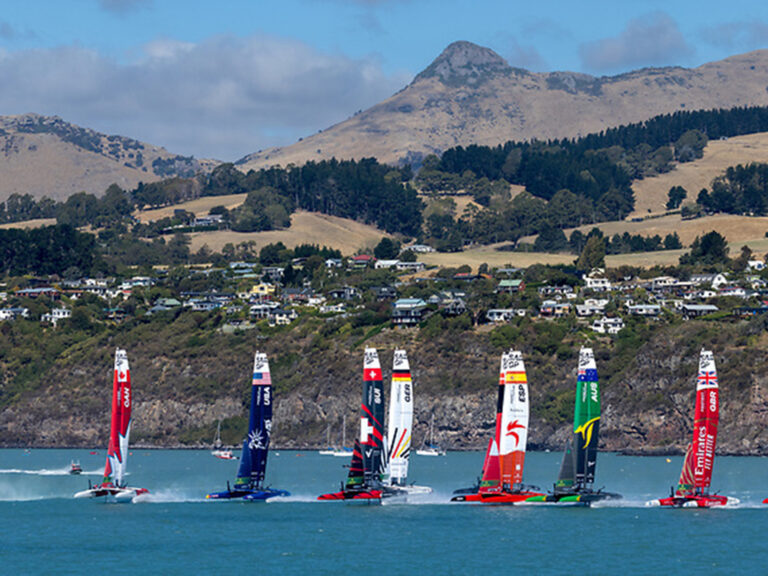It’s been some years since we’ve done a Sailing World survey of one-design class membership and we enjoyed doing it last year as a collaboration between SW and US SAILING (see methodology notes that follow). We intend to continue the survey annually and welcome input, errata notes, etc. We weren’t surprised to see that the biggest classes on this continent are the Laser and the Optimist classes. These two classes are sailed in nearly every racing area, and in the case of the Laser, both by youth and adults. Note that as a single design, the Optimist ranks as the biggest class because the Laser class numbers include those who sail Laser Radials, and Laser 4.7s. These are followed by the Lightning, Thistle, and Flying Scot-big, traditional centerboarders. The top 10 are rounded out by other familiar names including the Sunfish, J/24, Club 420, and Hobie Class. Also included is the Catalina 30, which along with the Nonsuch association (#12), shows the strength of big-boat cruiser/racer associations. Two classes stand out for absolute growth: the Club 420 and the J/105. The first represents the strength of the youth market, complementing and repeating the success in the late ’80s and early ’90s of the Optimist Dinghy Association. Both, it should be added, are proportionately under-representative of the larger numbers of youth sailing those boats, since only the top youth in each class typically join their association. The J/105 represents the strength of keelboat racing in bigger boats. It’s a relatively modern boat with its asymmetric spinnaker, doesn’t require too many crew, and isn’t extreme on the performance curve. Mainstream classes such as the J/24, Lightning, Snipe, Thistle and Flying Scot have suffered losses since ’97, but several of them have worked harder to promote membership in the last couple years and may be regaining some ground. The gross numbers of the surveys are affected most by manufacturer classes that at one time offered class membership free with the purchase of a boat-and kept people on the class rolls for years-yet more recently have required dues paid by individuals. The North American Hobie Class Association is the primary case in point, optimistically reporting 12,000-plus members in the ’90s and now reporting 900 members across the Hobie 16, 17, and other classes under its umbrella. To a much smaller extent, the J/22 and the Byte have lost size due to this shift. The Corsair classes, on the other hand, may be showing extra strength due to renewed manufacturer support. Most classes build most of their boats in their first 10 years of existence. Then they often go through cycles when participation drops, resale values drop, used boats become an irresistible deal, and new owners buy the boats, fix them up, and start racing again-classes such as the Buccaneer 18, J/24, and Mumm 30 have all been through these cycles. Whether manufacturers can adjust to the cycles and continue to sell enough new boats is always a challenge; on the other hand, with good management, classes that have sold a lot of boats at one time can continue to support new-boat sales. Of all the classes surveyed in the ’90s and again this year, the majority have lost membership. In fact, twice as many classes have fewer members than they did in 1997. These losses have, however, been supplemented in great part by new classes, ranging from the Corsair trimarans to the Beneteau 36.7 and J/120. Statistics are always suspect when aggregated. Changes in a class approach to membership (provided with a boat purchase versus paid by individuals) makes the biggest difference. Changes in class administration sometimes allow members to drift away. Developing an annual reporting system is a great idea-the best we’ve seen is by the National E Scow Class Association, which produces a report dating back nearly 10 years including full and associate memberships by individual fleets. Use this kind of annual report to see if the class is growing, but after a while you can also study trends and develop new policies or just give attention to weak fleets. The International 505 and Albacore are other classes that are doing this well. 2004 Survey Methodology: This survey measures class association members and was generated by e-mail notices to classes, which led to a volunteer or staff member visiting a survey web page to fill out the survey. Because it’s a survey of association members, it’s not a measure of the actual number of boats or participation rates across all racing, yet it is one good barometer of a class’s health. It includes associate members (typically non-owners) when a class includes them, and in some years these types of members are recruited better than others, leading to fluctuation. It’s also well known that most owners of a given type of boat never join the class. An extreme example is the Laser, with over 100,000 boats built, maybe 20,000 racing, and a grand total of 2,800 members in North America. So this survey doesn’t purport to measure total participation or class boat ownership. SW’s surveys from the 1990s were reasonably comprehensive, with more than 125 classes reporting. The SW/US SAILING 2004 survey numbers cover fewer classes, but most of the bigger ones. We hope to repeat our electronic method of surveying next year, reaching more classes, and refining the process. US SAILING estimates that there are more than 200 one-design classes, but the majority have fewer than 100 members. Comments are welcome: John Burnham and Lee Parks









